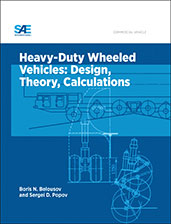Journal Article
Load Estimation of an Open-Link Locomotion Module for Robotic and Commercial Multi-Wheel Applications
2013-09-24
2013-01-2358
An open-link locomotion module, comprising a driving wheel with an electric motor, a system of electro-hydraulic suspension, and an electro-hydraulic power steering system, is presented in this paper as the basis for the modular design of unmanned (robotic) ground vehicles. The open-link-type configuration allows the module to be functionally integrated and engineered with a system of similar modules and thus virtually allows to compile vehicles with any required number of driving wheels. The overall dimensions and carrying capacity of the tire used in the module, as well as technical characteristics of the suspension and power steering systems make possible to employ the module for commercial ground vehicle applications. This paper considers technical issues related to designing the locomotion module.

